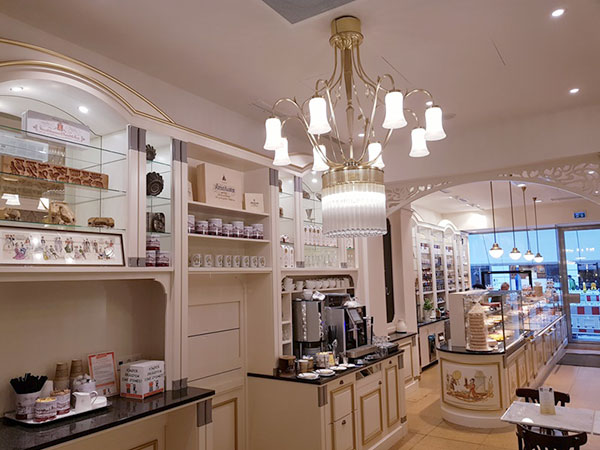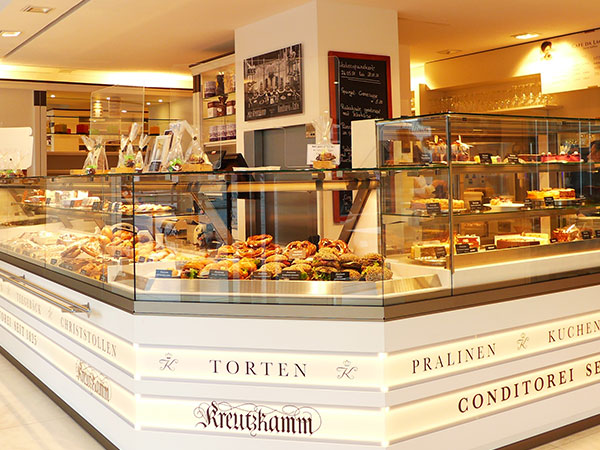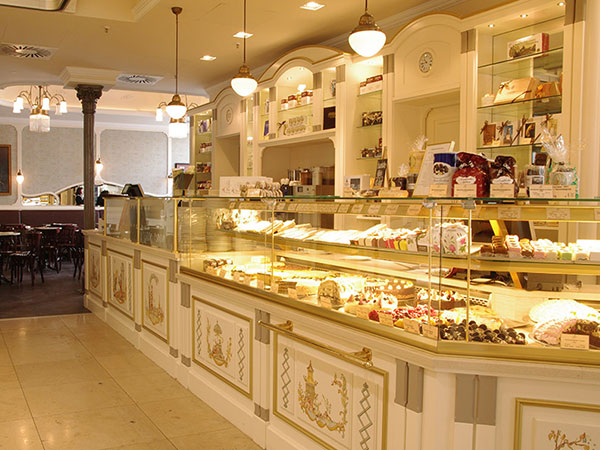
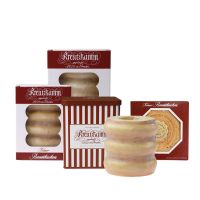
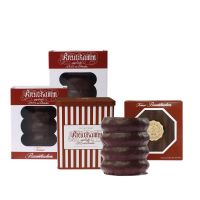
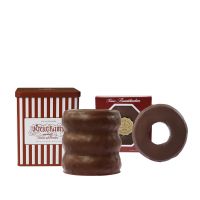
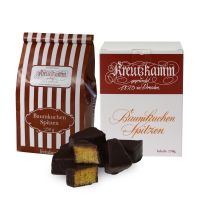
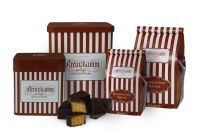
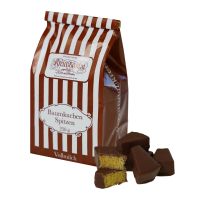

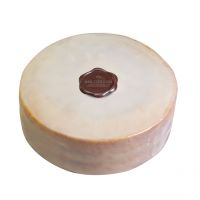
Our Baumkuchen: Confectioner's art according to old tradition
Apart from the best ingredients such as fine butter, aromatic tonka beans, fresh lemon zest and hot fire, baking a Baumkuchen requires decades of experience and knowledge. In our family of pastry chefs, we pass on our knowledge from generation to generation. Layer by layer, our Baumkuchen is still applied by hand and baked in front of an open flame. Ring by ring, it gets its characteristic appearance, which is reminiscent of the annual rings of a tree. Apricot jam delicately encloses its pores and, together with a vanilla icing or coated in chocolate, gives the Baumkuchen its unique taste.
Our recipes stand for handmade quality and have therefore been passed on almost unchanged for generations.
A Brief History of Baumkuchen
Baumkuchen are cakes that are built up in layers and baked over an open flame. The Baumkuchen was first mentioned in 1682 in a dietary cookbook by Johann Sigismund Elsholtz, who was the personal physician of Elector Friedrich Wilhelm of Brandenburg. However, it is not known exactly when it was invented. An Italian cookbook from 1426, in which a first recipe for the Baumkuchen is recorded, suggests that the "king of pastries" was also baked in the Middle Ages. The oldest German-language recipe dates back to 1450 and was recorded in a Heidelberg manuscript.
The recipe that is used today for the traditional Baumkuchen originated in the 18th century.
Aromatic and tasty, that’s how our customers describe the king of pastry. Our freshly baked Baumkuchen are available with sugar glaze, milk chocolate, dark chocolate, chocolate coated as Baumkuchen dessert or coated with chocolate as Baumkuchenspitzen, Tree Cake Bits. Packed in a cardboard box, in a noble wooden box or in a tin, the Baumkuchen is an ideal gift, whether as a single ring or in a large version. Discover your favorite Kreutzkamm and order the Baumkuchen in our online shop directly to your home. Or visit one of our cafés and choose your own Baumkuchen!
Turn your day into a day of celebration!
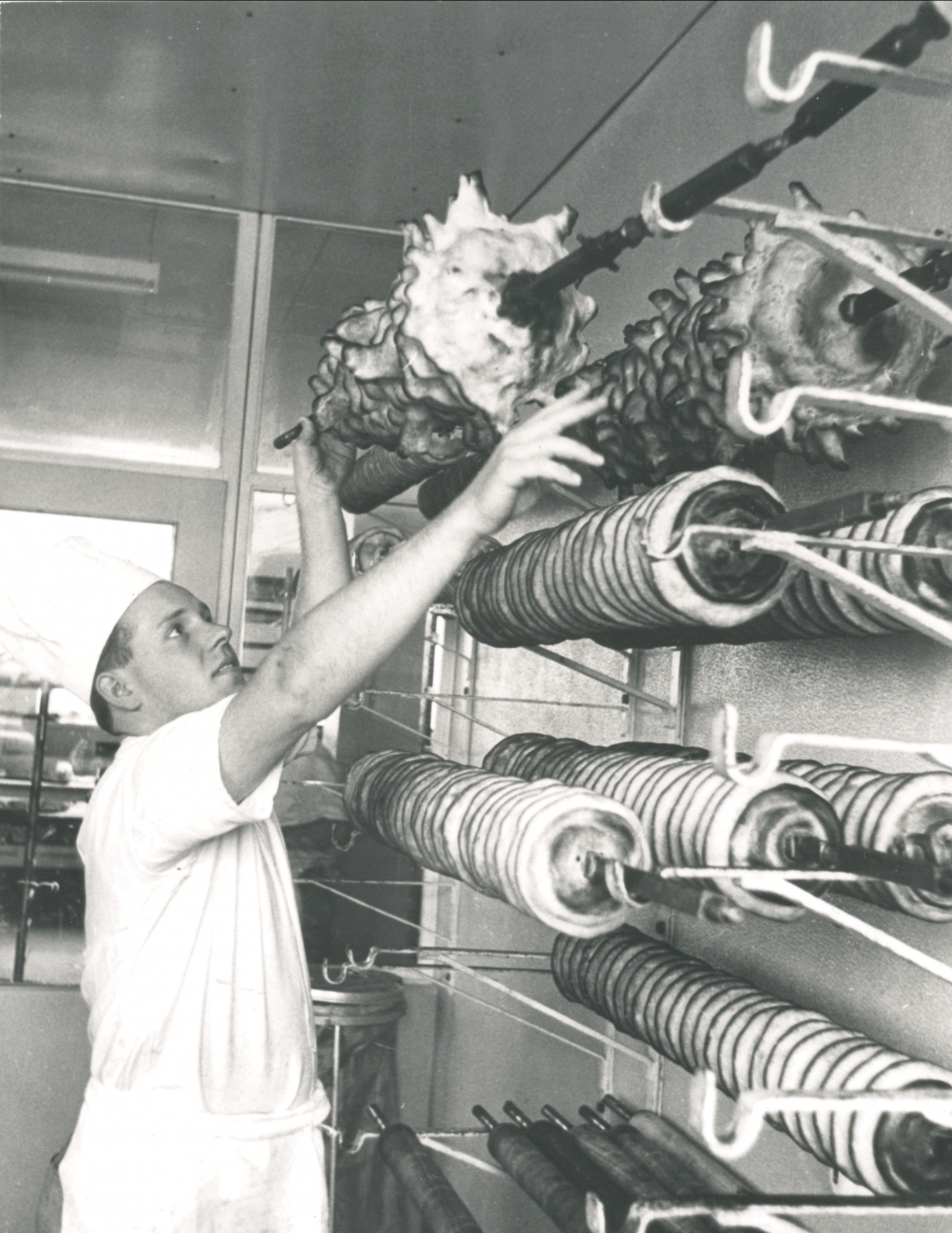
The story of Baumkuchen - Tree Cake
Baumkuchen is not unjustly called the "king of cakes, cake of kings".
Its history dates back to the Middle Ages. It decorated the table of crowned heads on festive occasions and was reserved for only a few wealthy people. Nowadays, Baumkuchen is a treat that has been very popular - not only because of its excellent taste, but also because of its easy digestibility.
Over the past decades, our house has taken great care of this truly royal pastry and has brought it to a top quality as well as our world-famous Kreutzkamm Christstollen.
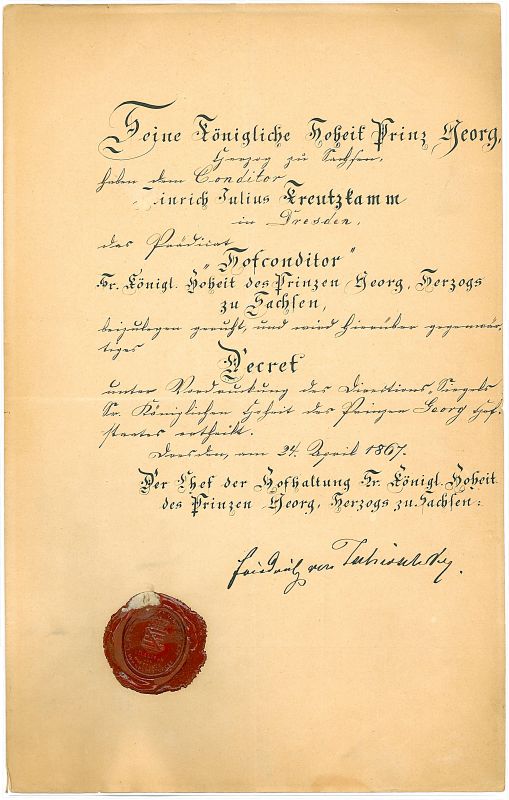
Baking a Baumkuchen requires – apart from the best ingredients and appropriate equipment – first and foremost a long experience. This is handed over for five generations of our confectioner family since 1825.
In 1867 in Dresden, Heinrich Julius Kreutzkamm was awarded the title of royal court confectioner. Many high and highest awards have followed since then, until recent times. This has shaped the reputation of our company and its products far beyond the borders of our home country. Countless parcels that have since been sent abroad by us, especially at Christmas time, bear witness to this. Today in Munich – as once in the beautiful Florence on the Elbe in Dresden.
What is a Baumkuchen made of and how is it baked?
The Baumkuchen is a stirred egg mass. Take: lots of eggs, the whites separated from the yolk, good butter, wheat powder, sugar, marzipan and a mixture of natural spices, the composition of which remains a well-kept secret. Whipped beaten egg whites mix with the valuable ingredients to form a fluffy and creamy mass. This is applied layer by layer on parchment-wrapped rollers and baked in front of an open flame. As a result, layer by layer – as bright and juicy as possible – the characteristic tree rings are created during the baking process. This requires a lot of care and patience, because the cake has 10-25 layers depending on the size. Apricot jam closes pores. This, together with a vanilla icing or a chocolate coating, gives it its unique taste.
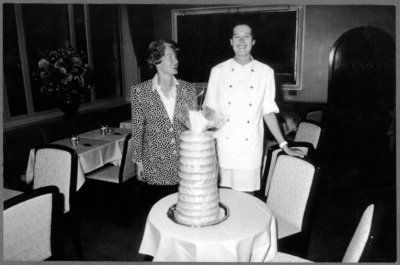
Of course, the shelf life is limited, but a packaged Baumkuchen should last about 6-8 weeks if stored properly, cool. We do not use any preservatives. In the wooden box in the vacuum bag, however, it remains fresh for a long period of time.
Do you know how your Baumkuchen tastes best? You will have the greatest treat for the palate when you cut the cake into wafer-thin slices. With a longer sharp knife, the Baumkuchen is cut flat into thin slices. Cover the cut of the rest of the cake with cling film.
Here you can take a look at our german family chronicle, which we published on the occasion of our 175th anniversary in 2000.



